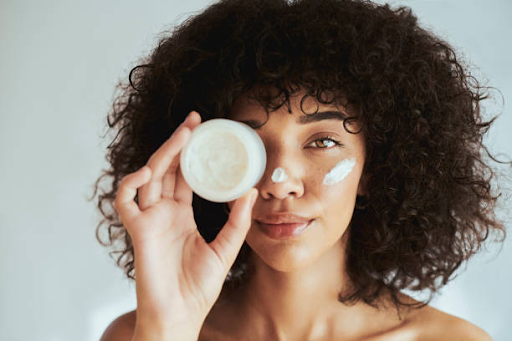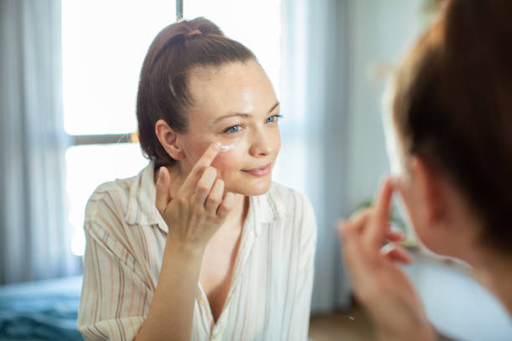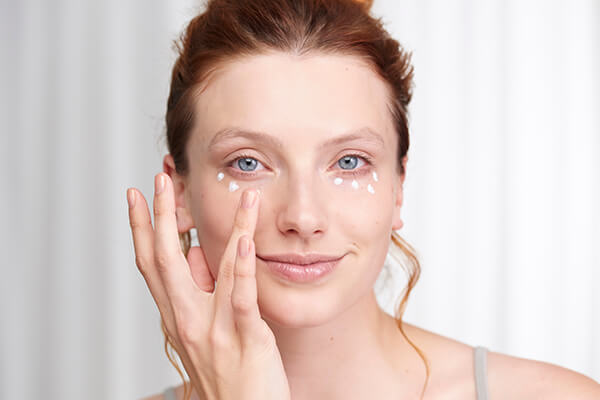Eyes, often referred to as the windows to the soul, play a significant role in our overall appearance. They are a reflection of our emotions, health, and, some might say, our age. As we age, the skin around our eyes can show signs of wear and tear, from fine lines and wrinkles to puffiness and dark circles. It’s no wonder that eye creams have become a staple in many people’s skincare routines. In this essay, we will delve into the fascinating world of eye creams, exploring their history, ingredients, and how they work to rejuvenate the delicate skin around our eyes.

The History of Eye Creams
The concept of using creams specifically designed for the eyes dates back centuries. Ancient civilizations, including the Egyptians and Greeks, recognized the significance of the eyes and sought ways to maintain their beauty. Cleopatra, the famed Egyptian queen known for her timeless beauty, was said to use a mixture of honey and milk on the skin around her eyes. Greek philosopher and mathematician Pythagoras, too, was a proponent of eye creams, using one made from olive oil and water to protect and nourish the delicate skin. In the early 20th century, as skincare products began to evolve, eye cream gained popularity. The focus was primarily on moisturizing the eye area. However, it was in the latter half of the 20th century that eye creams took a more scientific approach. With advancements in dermatology and a better understanding of skincare, products became more specialized, targeting specific eye concerns such as wrinkles, puffiness, and dark circles.
Ingredients that Make Eye Creams Effective
One of the secrets behind the effectiveness of eye creams lies in their ingredients. These specialized products often contain a combination of key components that address various concerns associated with the skin around the eyes.
Hyaluronic Acid: Hyaluronic acid is a natural compound that plays a vital role in maintaining skin hydration. Eye creams with hyaluronic acid help retain moisture, reducing the appearance of fine lines and wrinkles around the eyes.
Peptides: Peptides are amino acid compounds that stimulate collagen production in the skin. Collagen is essential for maintaining skin elasticity, and the inclusion of peptides in eye creams can help reduce sagging and improve firmness.
Retinol: Retinol, a derivative of vitamin A, is a powerful ingredient for skin renewal. It promotes cell turnover, which can diminish the appearance of fine lines and boost the overall texture of the skin.
Caffeine: Caffeine is a popular ingredient in eye creams due to its ability to reduce puffiness. It constricts blood vessels, reducing swelling and making the eyes appear more awake and refreshed.
Vitamin C: Known for its antioxidant properties, vitamin C helps brighten the skin and fade dark circles. It also assists in protecting the skin from environmental damage.
Niacinamide: Niacinamide, or vitamin B3, can improve the skin’s moisture barrier, reducing the risk of water loss and enhancing the skin’s ability to retain hydration.
Antioxidants: Antioxidants such as green tea extract or grapeseed extract help protect the skin from free radicals, which can contribute to premature ageing. These ingredients keep the skin looking youthful and radiant.
How Eye Creams Work
The skin around the eyes is thinner and more delicate than the skin on the rest of the face, making it more susceptible to damage and the signs of ageing. Eye creams are formulated to address these specific concerns, working in several ways:
Hydration: Eye creams provide essential moisture to the skin, preventing dryness and reducing the appearance of fine lines.
Collagen Production: Ingredients like peptides stimulate collagen production, improving skin elasticity and reducing sagging.
Wrinkle Reduction: Retinol and other anti-ageing ingredients target wrinkles and fine lines, smoothing the skin’s texture.
Puffiness Reduction: Caffeine and other ingredients help reduce puffiness by constricting blood vessels and draining excess fluids.
Dark Circle Improvement: Ingredients like vitamin C and niacinamide target dark circles by brightening the skin and strengthening the delicate blood vessels under the eyes.
Protection: Antioxidants in eye creams protect the skin from environmental stressors, helping to prevent further damage.

Choosing the Right Eye Cream
Selecting the right eye cream can be a daunting task, given the myriad of options available on the market. To make an informed decision, it’s essential to consider your specific concerns and skin type. Here are some tips to help you choose the perfect eye cream for your needs:
Identify Your Concerns: Determine whether you want to address wrinkles, puffiness, dark circles, or a combination of these issues. This will help narrow down your options.
Skin Type Matters: Take into account your skin type. If you have sensitive skin, opt for a gentle, fragrance-free eye cream. Oily skin may benefit from a lightweight, non-comedogenic formula.
Ingredients: Check the ingredient list to ensure it contains the key components that address your concerns. Look for well-studied ingredients like hyaluronic acid, peptides, and retinol.
SPF Protection: If you’re concerned about sun damage, consider an eye cream with SPF to protect the delicate skin from harmful UV rays.
Patch Test: Before fully committing to an eye cream, perform a patch test to check for any allergic reactions or irritation.
Consult a Professional: If you’re unsure about which eye cream is best for you, consult a dermatologist or skincare specialist for personalized recommendations.
Incorporating Eye Cream into Your Skincare Routine
Now that you’ve chosen the perfect eye cream, it’s crucial to integrate it into your skincare routine correctly. Here’s a simple guide on how to do it:
Cleansing: Start by cleansing your face with a gentle cleanser to remove makeup, dirt, and impurities.
Toning: Follow up with a toner to balance the skin’s pH and prepare it to absorb the eye cream.
Eye Cream Application: Gently apply a small amount of eye cream to the skin around your eyes. Use your ring finger, as it exerts the least pressure, and dab the product, moving from the inner to the outer corner of the eye. Avoid tugging or pulling the delicate skin.
Moisturizer: Apply your regular moisturiser to the rest of your face, ensuring your skin remains hydrated.
Sunscreen: In the morning, apply sunscreen with SPF to protect your skin from harmful UV rays. If your eye cream contains SPF, you can apply it around your eyes.
Night Routine: At night, repeat the process, omitting the sunscreen. Let the eye cream work its magic while you sleep.
Patience and Consistency
It’s important to note that results from using eye creams may not be immediate. Patience and consistency are key. You may begin to notice improvements after several weeks of regular use. Moreover, eye creams are not a one-size-fits-all solution, so what works for one person may not work for another. Be prepared to experiment with different products until you find the one that best suits your needs.
Conclusion
Eye creams have a rich history that spans centuries, with ancient civilizations recognizing the significance of maintaining the beauty of the eyes. Today, modern science and skincare innovations have given rise to specialized eye creams formulated to address a variety of concerns, from wrinkles and puffiness to dark circles and hydration. Choosing the right eye cream and incorporating it into your skincare routine correctly can help you achieve ageless and radiant eyes. Remember, the eyes are indeed the windows to the soul, and with the right care and attention, they can continue to captivate and express your inner beauty for years to come.
